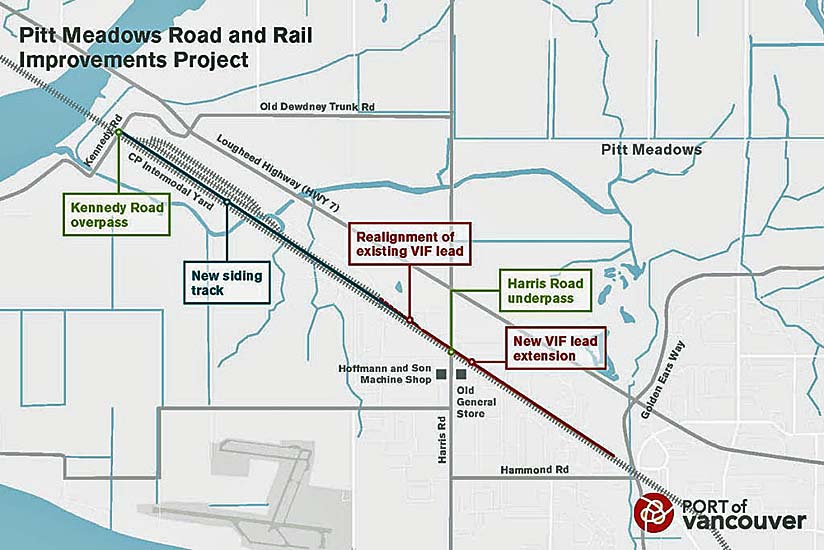
Pitt Meadows British Columbia - Dear Editor,
We understand that noise mitigation is an important priority for the community, so we'd like to address Diane Allen's comments [Re: LETTER: Letter Writer
Critical of Information Used in Pitt Meadows Flooding Study, 5 May 2021, The News online].
For context, the Pitt Meadows Road and Rail Improvements Project aims to improve the efficient movement of goods and people to and from the Port of Vancouver,
and along local roadways in Pitt Meadows.
Improving safety, access, and travel times for businesses, residents, and commuters is a key outcome of the project, which will help address the impacts of
future trade growth on the community.
Mitigating existing noise conditions in the area is outside of the scope of the project.
However, as per Transport Canada (TC) and Health Canada guidelines, which were introduced in 2007, a noise assessment is required when there is a change to
infrastructure, which, depending on the results, may require mitigation for any project specific impacts.
The rail components of this project triggered the noise and vibration assessment that Diane referred to.
The independent noise and vibration assessment was undertaken by BKL, an acoustic expert.
BKL relied on aerial imagery and general site observations to provide an indication of the existing walls along the rail corridor.
We consider this to be industry standard practice, particularly when on-site access may be difficult due to safety risks, such as large moving trains nearby,
as well as challenges in acquiring access permission from hundreds of residents during a pandemic.
Baseline measurement locations were chosen to be representative of community locations where noise and vibration impacts could occur, and in accordance with
established industry best practices to ensure the analytical model calibration and subsequent future scenario modelling was accurate.
The noise monitors were placed in locations that had clear sightlines to the corridor (none were placed behind walls), and captured rail activity including
trains passing by, train building, whistling, and other activity that takes place along the corridor.
The assumed height of existing fences doesn't affect the data that was captured, and as the analysis compares future scenarios, with and without the project,
where the existing walls are consistently modelled in all scenarios, the results are not significantly impacted by modest differences in the assumed heights of
existing walls.
Nonetheless, and noting the importance of this issue to the community, we have requested that BKL update their analysis in accordance with feedback received
from residents on the condition of existing walls in the area.
The results of this updated analysis will be included in future community engagements.
We know it is a busy and noisy corridor, and projected freight rail growth means it will be busier and noisier in the future.
Our goal is to improve the safe and efficient movement of goods and people, while reducing the impact on the community by improving safety, creating better
access, and eliminating wait times at the rail crossings.
The noise mitigation we are proposing, as part of this project, is above and beyond what is required as mitigation for the proposed project, because we know it
is important to the community, so we believe that a 2030 future with the project is better than one without.
Peter Cohen - manager of infrastructure delivery for Vancouver Fraser Port Authority.
(because there was no image with original article)
(usually because it's been seen before)
provisions in Section 29 of the Canadian
Copyright Modernization Act.
